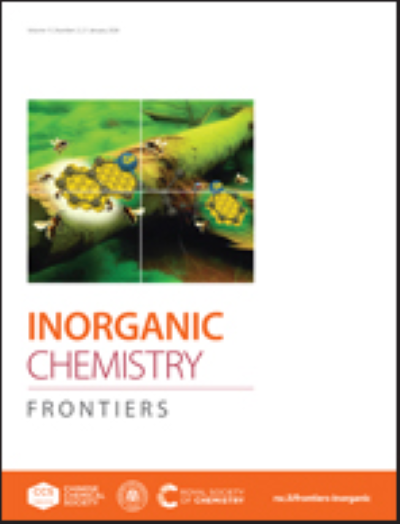镍催化吡啶的顺序氢化除氟:机制见解导致了台架稳定预催化剂的发现
IF 6.4
1区 化学
Q1 CHEMISTRY, INORGANIC & NUCLEAR
引用次数: 0
摘要
镍(0)配合物[Ni(iPrPN)(COD)] (iPrPN = 2-[(n -二异丙基膦)甲胺]吡啶,COD = 1,5-环二烯)是一种有效的吡啶氢脱氟预催化剂。在室温下,用3 h 30 min在2位和6位对2-氟和2,6-二氟吡啶进行氢脱氟,考察了氟原子数和吡啶环上氟原子位置对催化剂效率的影响。2,6-二氟吡啶加氢除氟的机理实验表明,COD配位后C-F氧化加成是催化剂进入循环的途径,[Ni(iprn)(COD)]配合物是催化剂的静息态。Ni(II)氟配合物[NiF(iPrPN)(6-Fpy)] (6-Fpy = 6-氟吡啶-2-基)和[NiF(iPrPN)(py)] (py = 2-吡啶基)在随后的两次加氢脱氟循环中被独立合成并通过单次翻转实验鉴定为中间体。两种Ni(II)氟化物配合物都是该工艺的台架稳定预催化剂,在亚化学计量量的COD存在下,其效率与[Ni(iprn)(COD)]相当,以防止催化剂失活。本文章由计算机程序翻译,如有差异,请以英文原文为准。
Nickel-Catalysed Sequential Hydrodefluorination of Pyridines: Mechanistic Insights Led to the Discovery of Bench-Stable Precatalysts
The nickel(0) complex [Ni(iPrPN)(COD)] (iPrPN = 2-[(N-diisopropylphosphino)methylamino]pyridine, COD = 1,5-cyclooctadiene) was an efficient precatalyst for the hydrodefluorination of pyridines employing pinacolborane (HBPin). 2-fluoro and 2,6-difluoropyridines were hydrodefluorinated at the 2- and 6-positions at room temperature in 3 h 30 min. The impact of the number of fluorine atoms and their position at the pyridyl ring in the efficiency of the catalyst was explored. Mechanistic experiments for the hydrodefluorination of 2,6-difluoropyridine allowed to identify COD decoordination followed by C-F oxidative addition as the catalyst entry pathway to the cycle and the [Ni(iPrPN)(COD)] complex as the catalyst resting-state. The Ni(II) fluoride complexes, [NiF(iPrPN)(6-Fpy)] (6-Fpy = 6-fluoropyrid-2-yl) and [NiF(iPrPN)(py)] (py = 2-pyridyl) were independently synthesized and identified as intermediates in the two subsequent hydrodefluorination cycles operative through single-turnover experiments. Both Ni(II) fluoride complexes were found to be bench-stable precatalysts for the process with a comparable efficiency to [Ni(iPrPN)(COD)] in the presence of a substoichiometric amount of COD to prevent catalyst deactivation.
求助全文
通过发布文献求助,成功后即可免费获取论文全文。
去求助
来源期刊

Inorganic Chemistry Frontiers
CHEMISTRY, INORGANIC & NUCLEAR-
CiteScore
10.40
自引率
7.10%
发文量
587
审稿时长
1.2 months
期刊介绍:
The international, high quality journal for interdisciplinary research between inorganic chemistry and related subjects
 求助内容:
求助内容: 应助结果提醒方式:
应助结果提醒方式:


